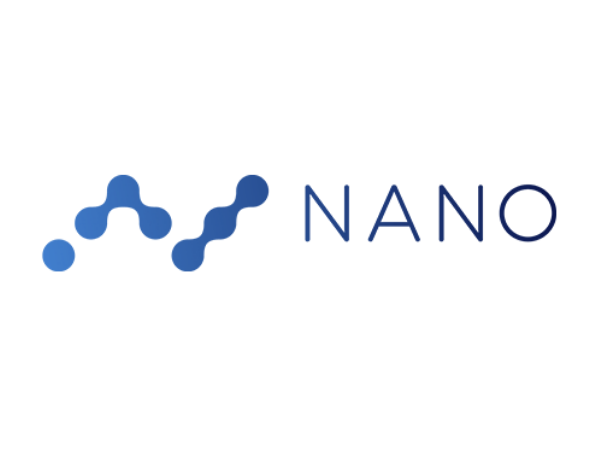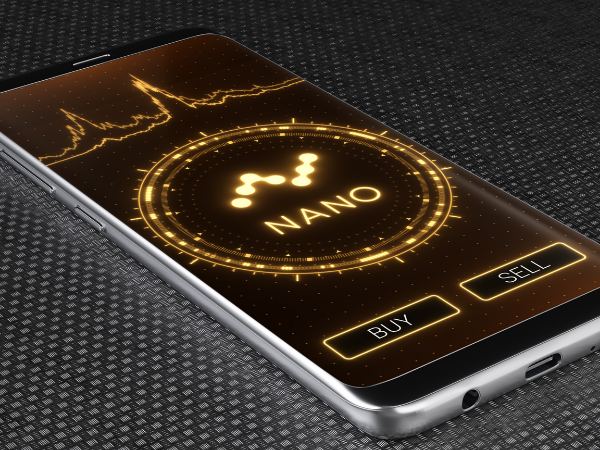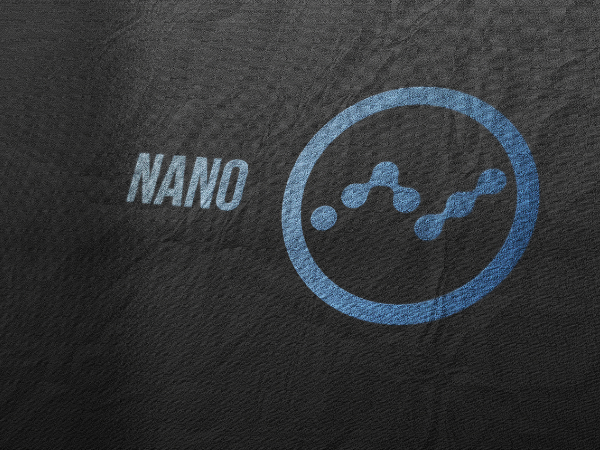NANO Coin: Faster, greener and better than Ethereum?
Out of all the cryptocurrencies out there, the NANO coin uses one of the simplest systems. What’s more, it’s a more affordable and practical way to transfer funds compared to bitcoin. Does investing in a simple system mean it’s profitable?
Let’s first talk about the NANO foundation and its network and cryptocurrency. Then, we’ll explain what its blockchain does and how it works. More importantly, we’ll see if NANO coins are a worthwhile investment.
The cryptocurrency craze started with Bitcoin, but NANO wants to beat its decade-old system. All the new cryptos want to do this, so you should pay attention as an investor. As a reward, you’ll identify the best cryptos your portfolio needs!
What is NANO coin?

Bitcoin launched in 2009 as the first open-source, peer-to-peer digital currency. This prompted many people to use it as a basis for their cryptocurrencies.
All of them wanted something better than bitcoin. Some even included new features for their cryptos. Others increased the transaction speeds and limits. NANO coin fits the latter camp.
Its founder is Colin LeMahieu, who is now the Nano Foundation’s CEO. He launched his cryptocurrency called RaiBlocks in 2014. In January 2018, the name changed to Nano.
One of Nano’s webpage states that it’s “ideal for everyday transactions.” It offers extremely quick transactions with no transaction fees. Even better, it’s eco-friendly.
How does the NANO blockchain work?
"Nano, an eco-friendly cryptocurrency that doesn’t rely on mining, printing or minting, aims to address the current inabilities in today’s existing financial systems and limits fees while providing quick transaction speeds." -Pavel Matveev, CEO @wirexapp https://t.co/fuK8yz0DNw
— Nano (@nano) July 7, 2021
The NANO network is similar to bitcoin. It achieves these features with the use of a block-lattice data structure. This is also called a Directed Acyclic Graph (DAG).
Just like the mother of cryptos, NANO transfers start with a block. Nodes on the network also confirm them. These nodes are computers owned by regular people.
The nodes compete against each other to be the first to confirm a transaction. The winner gets proof of work. This adds a block to the bitcoin network. Then, the winner earns more bitcoins.
That’s where the similarities end. Nano uses Open Representative Voting (ORV). Each person with a Nano account gets a voting weight based on how many NANO coins they have.
Those who have the most coins get to choose the representatives. In turn, these reps are the ones that vote on transactions to achieve consensus. Here’s a simple version of how it works:
- A sender publishes a block that records the amount that will be sent.
- The recipient posts a block that matches the sender. This credits the sender’s account for the amount sent.
With bitcoin, all transactions are recorded on a public ledger. This means users have to deal with a massive list. Its size is roughly 250 GB, according to Exodus!
Meanwhile, Nano users have a smaller, separate blockchain called an “account chain.” This records only that person’s transaction history. As a result, NANO exchanges are faster.
What’s more, it doesn’t give block rewards. This means nodes aren’t racing against each other. It meant this to prevent people from setting up too many nodes and dominating the network.
Should I invest?
There’s a limit of 133,248,297 NANO coins. It won’t ever increase. You can’t mine or stake them too. Despite the limited supply, you might want other coins instead.
If you’ve been following cryptocurrencies, you might have seen ones that are like NANO. They want to be better than bitcoin in every way.
Have you ever wondered why they haven’t taken the #1 spot yet? If you check CoinMarketCap, they’re far away from the top ten. At the time of writing, NANO stands at #105.
The main thing that keeps them from topping bitcoin is adoption. Bitcoin has been around for more than a decade. Within that time, lots of countries and companies have adopted it.
Nowadays, major retail stores let you buy with bitcoin. Visa even offers a credit card that lets you earn bitcoin rewards. It’s now seen as a new asset class by top investment firms!\
Meanwhile, countries are making laws for bitcoin. El Salvador recently turned it into legal tender. Soon, it will open its bitcoin mining facility that runs on geothermal energy!
Nano’s website also has a list of firms that use it. However, bitcoin’s users are much more popular. This assures investors that bitcoin is a secure investment.
Nano doesn’t offer block rewards to keep itself decentralized. However, an incentive system helps in securing the network. Without one, nothing stops people from spamming it.
In March 2021, that’s exactly what happened. A bunch of near-zero value transactions flooded the Nano network. As a result, it knocked the exchanges out of sync.
What other coins should I get?
Other cryptocurrencies are doing better than NANO. They are faster and greener than bitcoin as well. Yet, they don’t encounter the same problems!
Cryptos don’t have to choose between proof-of-work or nothing. They could use proof-of-stake instead. It serves as an incentive system while being eco-friendly.
People may leave a certain amount of cryptos in the network. The staked coins help its services. In return, the stakeholders earn more of those coins.
What’s more, some of them aren’t just digital money. They have other features, such as smart contracts and decentralized apps (dapps). Here are a few cryptos that have these traits:
- Polygon (MATIC) – You may stake MATIC coins to become a checkpoint node. In return, you get more MATIC bucks that you can swap for real ones.
- Binance Coin (BNB) – Binance is the biggest cryptocurrency exchange platform in the world. It has a native coin called BNB. It’s used to create non-fungible tokens (NFTs) and post them on Binance. What’s more, you could use Flexible or Fixed Savings to earn more BNB coins.
- Chromia (CHR) – It lets people create dapps that have sidechains. This helps them gain more functions than regular ones. Chromia dapps can have a separate payment system for its users. However, they all must pay the CHR main network with CHR coins.
At the time of writing, the price of NANO was $4.08. The trading volume was $15,269,265.88. It reached an all-time high of $37.62 on January 2, 2018. Nano hasn’t returned to this ever since.
Final Thoughts
You should decide on your investments based on your research. Check other sources besides this article to learn more about NANO coins. Perhaps you’ll see them as a good investment.
Only use the money you’re willing to lose. Cryptocurrencies are not a get-rich-quick scheme. Like all investments, it has risks. Spreading into other asset types can reduce risk, though.
For example, stocks in certain sectors are a good choice right now. Money market funds may also grow despite the pandemic. Both of them can even pay dividends!
Learn more about the NANO coin
What is Nano coin worth?
At the time of writing, the NANO coin price was around $4.08. This could have changed by the time you’re reading this. Please check other websites for the latest price quote.
What does Nano coin do?
NANO coins help the Nano network function. People can hold NANO coins to vote on representatives. In turn, the reps vote on Nano transactions and help them execute.
Will Nano coin go up?
The crypto market is full of possibilities. We may see its price go up in the long run. Still, other cryptos are performing better than NANO. This may change if the network improves.
If you are interested in content marketing, please email Anthony@Inquirer.net.
Disclaimer: This article is the author’s personal opinion, differing from the “official” statements or facts. All writers’ opinions are their own and do not constitute financial advice in any way whatsoever. Nothing published by Inquirer.net constitutes an investment recommendation, nor should any data or content published by Inquirer.net be relied upon for any investment activities.
Usa.inquirer.net strongly recommends that you perform your own independent research and/or speak with a qualified investment professional before making any financial decisions.
Sponsored Advertising Content:
Advertorial or Sponsorship User published Content does not represent the views of the Company or any individual associated with the Company, and we do not control this Content. In no event shall you represent or suggest, directly or indirectly, the Company's endorsement of user published Content.
The company does not vouch for the accuracy or credibility of any user published Content on our Website and does not take any responsibility or assume any liability for any actions you may take as a result of reading user published Content on our Website.
Through your use of the Website and Services, you may be exposed to Content that you may find offensive, objectionable, harmful, inaccurate, or deceptive.
By using our Website, you assume all associated risks.This Website contains hyperlinks to other websites controlled by third parties. These links are provided solely as a convenience to you and do not imply endorsement by the Company of, or any affiliation with, or endorsement by, the owner of the linked website.
Company is not responsible for the contents or use of any linked website, or any consequence of making the link.
This content is provided by New Start Advantage LLC through a licensed media partnership with Inquirer.net. Inquirer.net does not endorse or verify partner content. All information is for educational purposes only and does not constitute financial advice. Offers and terms may change without notice.



